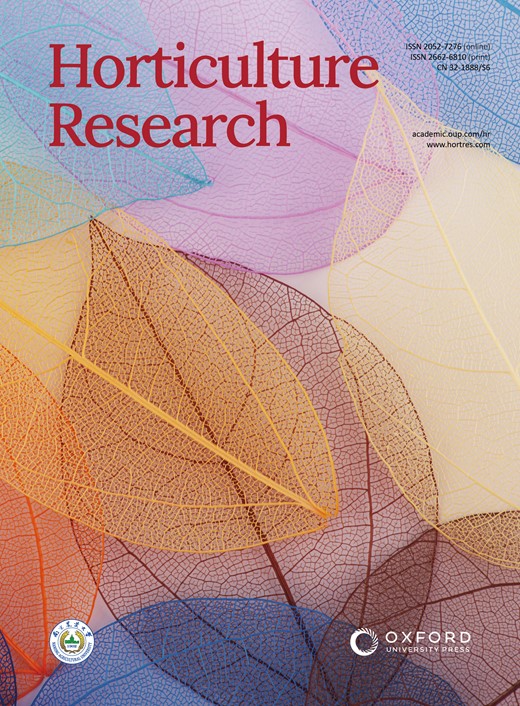骨架光周期对茶树昼夜节律和光合效率的干扰数学模型的深入分析
IF 8.7
1区 农林科学
Q1 Agricultural and Biological Sciences
引用次数: 0
摘要
植物的昼夜节律系统是一种复杂的生理机制,是植物根据昼夜周期进行自我调节的生物学过程。为了解不同光周期对茶树生物钟的影响,我们分析了正常光照下(光照/黑暗=12 h/12 h,12L12D)核心时钟基因(CCA1、PRR9、TOC1、ELF4)和光合作用相关基因(Lhcb、RbcS、atpA)的表达水平,并以周期误差和相位误差定义的代价函数作为基本模型参数。在骨架光周期(光/暗=6小时/6小时,6L6D;光/暗=3小时/3小时,3L3D)下,茶树的时钟基因和光合作用相关基因的表达谱发生了变化,气孔开放呈现昼夜节律。这些观察结果表明,骨光周期可能会对茶树的昼夜节律、光合效率和气孔调节产生影响。我们的研究和模型分析了不同光周期途径下昼夜节律的组成,也揭示了茶树光合作用昼夜节律调控的内在机制。本文章由计算机程序翻译,如有差异,请以英文原文为准。
Interference of skeleton photoperiod on circadian clock and photosynthetic efficiency of tea plant: In-depth analysis of mathematical model
The circadian system of plants is a complex physiological mechanism, which is a biological process in which plants can adjust themselves according to the day and night cycle. To understand the effects of different photoperiods on the biological clock of tea plants, we analyzed the expression levels of core clock genes (CCA1, PRR9, TOC1, ELF4) and photosynthesis-related genes (Lhcb, RbcS, atpA) under normal light (light/dark =12 h/12 h, 12L12D) and took the cost function defined by cycle and phase errors as the basic model parameters. In the continuous light environment (light=24 h, 24L), the peak activity and cycle of key genes that control the biological clock and photosynthesis were delayed by 1 to 2 h. Under the skeleton photoperiod (light/dark=6 h/6 h, 6L6D; light/dark=3 h/3 h, 3L3D), the expression profiles of clock genes and photosynthesis-related genes in tea plants was changed, and stomatal opening showed a circadian rhythm. These observations suggest that bone photoperiod may have an effect on the circadian rhythm, photosynthetic efficiency and stomatal regulation of tea plants. Our study and model analyze the components of circadian rhythms under different photoperiodic pathways, and also reveal the underlying mechanisms of circadian regulation of photosynthesis in tea plants.
求助全文
通过发布文献求助,成功后即可免费获取论文全文。
去求助
来源期刊

Horticulture Research
Biochemistry, Genetics and Molecular Biology-Biochemistry
CiteScore
11.20
自引率
6.90%
发文量
367
审稿时长
20 weeks
期刊介绍:
Horticulture Research, an open access journal affiliated with Nanjing Agricultural University, has achieved the prestigious ranking of number one in the Horticulture category of the Journal Citation Reports ™ from Clarivate, 2022. As a leading publication in the field, the journal is dedicated to disseminating original research articles, comprehensive reviews, insightful perspectives, thought-provoking comments, and valuable correspondence articles and letters to the editor. Its scope encompasses all vital aspects of horticultural plants and disciplines, such as biotechnology, breeding, cellular and molecular biology, evolution, genetics, inter-species interactions, physiology, and the origination and domestication of crops.
 求助内容:
求助内容: 应助结果提醒方式:
应助结果提醒方式:


